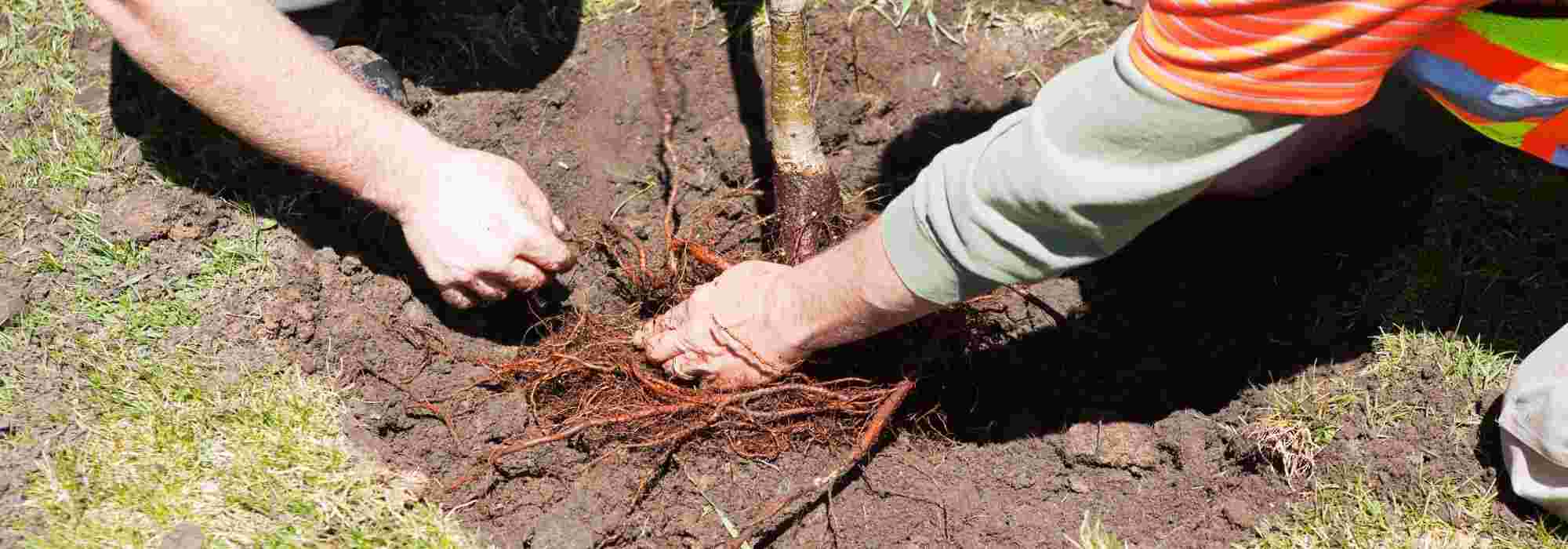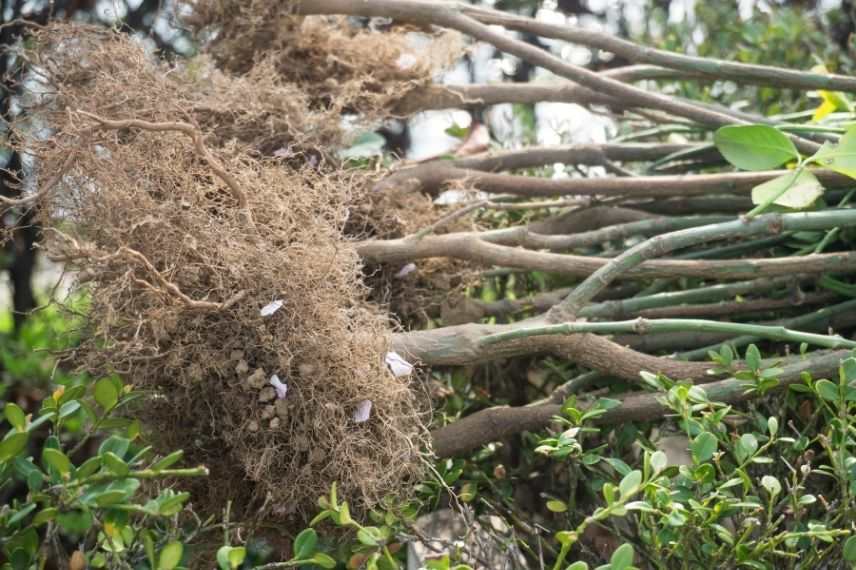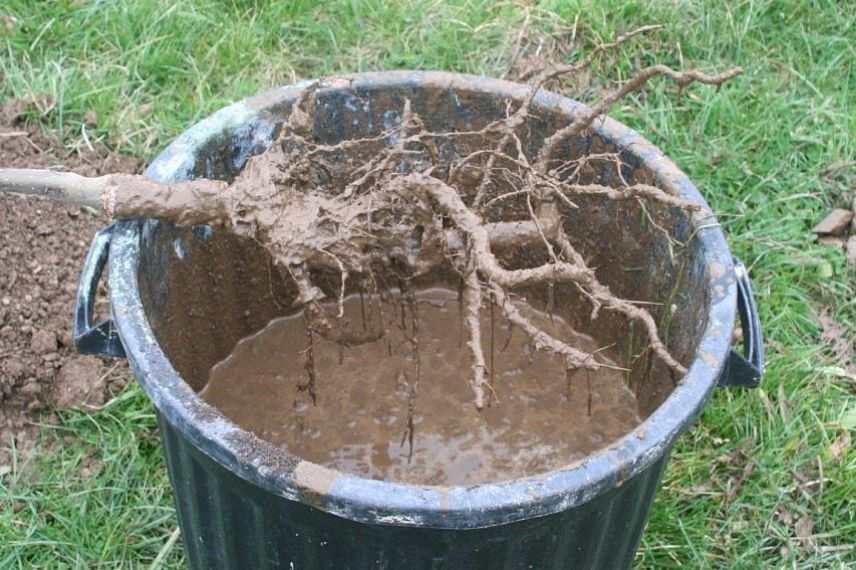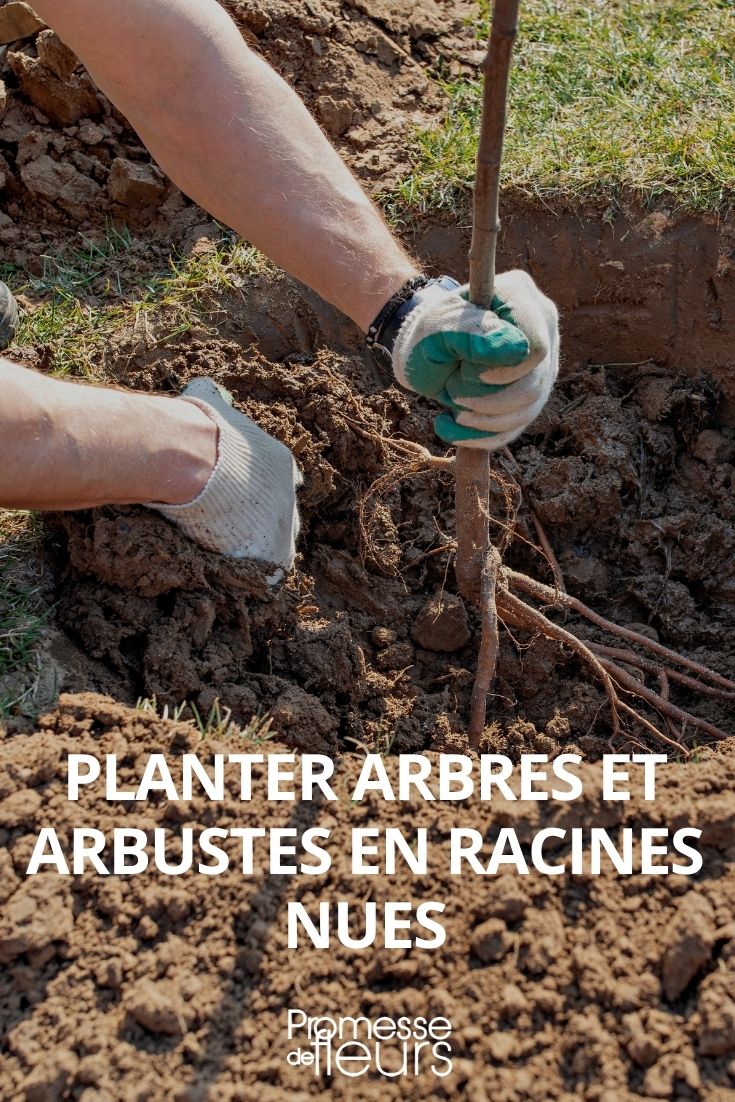
Planting trees and shrubs in bare roots
Our tips for successful planting
Contents
Planting a tree or a bush with bare roots has many advantages: plants are cheaper than those in pots, pots or clumps, easier to plant and transport, and have a very good recovery rate and more vigorous growth. This method is therefore ideal for creating a long hedge or a large orchard. However, there are some drawbacks. Firstly, plants with bare roots are not available all year round and can only be planted in autumn-winter. Additionally, bare root plants are more fragile than those offered in containers, as they have undergone trauma during uprooting in the nursery. Finally, planting must therefore be immediate and requires some extra care for optimal rooting: wrapping and soaking. Here are our tips to help you plant a tree or a bush with bare roots under the best conditions.
What is a tree or shrub with bare roots?
After being uprooted in the nursery, plants sold as bare roots are stripped of the soil surrounding their roots. There is no longer a clump, and the roots are clearly visible. Then, these trees and bushes are heeled in to keep their roots cool, protected from the sun and dehydration until they are sold. This mainly includes deciduous species of ornamental trees and bushes, fruit trees, and roses available as bare roots.
How to plant a tree or bush with bare roots?
The best time to plant a tree or a bush with bare roots is in autumn or early spring, as plants enter a period of vegetative dormancy from October to March. We advise against planting during frost or snow periods and when the soil is waterlogged. Before planting, it is essential to prepare and coat the roots. Note: trees and bushes with bare roots should be planted as soon as possible after receipt, as exposed roots can dry out! Immediate planting is ideal, but you can temporarily store your plant before planting. Also, you can prepare the planting hole a few weeks in advance to aerate the soil.

Do not let the roots dry out
The necessary equipment
- tree or bush with bare roots
- pruning shear
- large bucket
- cow dung, manure or ready-to-use coating
- spade, fork, pickaxe, shovel
- compost or potting soil
- stake and ties (for standard tree)
- mallet
- watering can
Preparing the roots
This technique involves lightly trimming the roots to stimulate the growth of root hairs. Check the bare roots before planting; they should be healthy and free from injuries. Using a sharp, disinfected pruning shear, cut away any dried or damaged roots, as these can invite diseases. Shorten any disproportionate roots to create a more homogeneous root system. This will also prevent you from digging too large a hole. Be careful not to be too severe.
Coating the roots
To perform the coating, you need to that will facilitate root recovery by ensuring good soil adherence to the roots. Coating the roots protects them from dehydration and promotes healing. Here’s how to prepare a coating:
- Take some garden soil, preferably clayey.
- Add fresh cow dung or fresh horse manure. If you don’t have these, well-matured compost is a good alternative. There is also manure in granules, which is practical, easy to measure, and store.
- The mixing ratio is 1/3 soil, 1/3 organic matter, and 1/3 water.
- Gradually add rainwater while mixing. The coating should be paste-like and light, so it adheres well to the roots.
Ideally, perform the coating 24 hours before planting. Soak the roots in the coating, ensuring they are thoroughly coated, and let them soak until the next day.

Coating the roots before planting (photo wisemandarine)
Planting with bare roots
- Dig a hole twice the volume of the plant’s roots. To respect the different soil layers, make a first pile with the soil extracted from 25-30 cm deep. This is the rich, fertile topsoil. Then, make a second pile with the soil removed beyond 30 cm deep, which is of lesser quality.
- Loosen the soil at the bottom of the planting hole; it should be loose. Add compost or potting soil and mix. If necessary, adding sand will lighten your clay soil.
- You may optionally add mycorrhizae. These are microscopic fungi that enhance plant development by aiding the absorption of nutrients present in the soil.
- A tree with bare roots needs to be staked. Determine the direction of prevailing winds; the stake should face this direction to help the tree withstand the wind. Place it towards the edge of the hole, not in the centre. Drive the stake 50 cm deep using a mallet.
- Position the tree or bush upright. You can use the handle of your spade laid across the planting hole to check that the collar is level with the soil surface. Adjust the depth of the hole and the vertical alignment if necessary.
- Backfill the planting hole first with the soil from the second pile, then with the topsoil to which you have added compost or potting soil.
- Level the soil and firm it down with your foot to ensure good contact between the soil and the roots and eliminate air pockets.
- Attach the tree to the stake with ties of your choice (coconut string, rubber strap). Do not tighten too much, as the trunk will thicken during growth.
- With the remaining soil, form a watering basin at the base of the tree or bush.
- Water generously until the soil can no longer absorb water.
- Apply a layer of mulch 7 to 10 cm thick. This acts as protection during winter, maintains consistent moisture, and prevents weed growth in early spring.

After planting
- From spring onwards, resume watering and keep the soil cool during hot spells. Top up the mulch if necessary.
- Regularly check the health of your plant.
- Check the ties of the staked tree. If they are constricting the trunk, loosen them.
- After 1 year of planting (a maximum of 2 years), remember to remove the stake from the tree.
For further reading
- Everything you need to know about coating the roots of trees and bushes
- Discover what you need to know about root dressing
- Find our guide on how to stake a fruit tree
- All the advantages and disadvantages of different packaging for trees and bushes: bare roots, balled or potted?
- Olivier shares all his tips to help you choose your hedging bushes: bare roots, clumps, pots, or potted bushes
- Discover François’s techniques and advice on heeling in your plants before planting
- Check out Olivier’s advice on what absolutely not to do or how to fail at planting your trees in 5 lessons
- How to properly place trees in a garden?
- Subscribe!
- Contents
































Comments